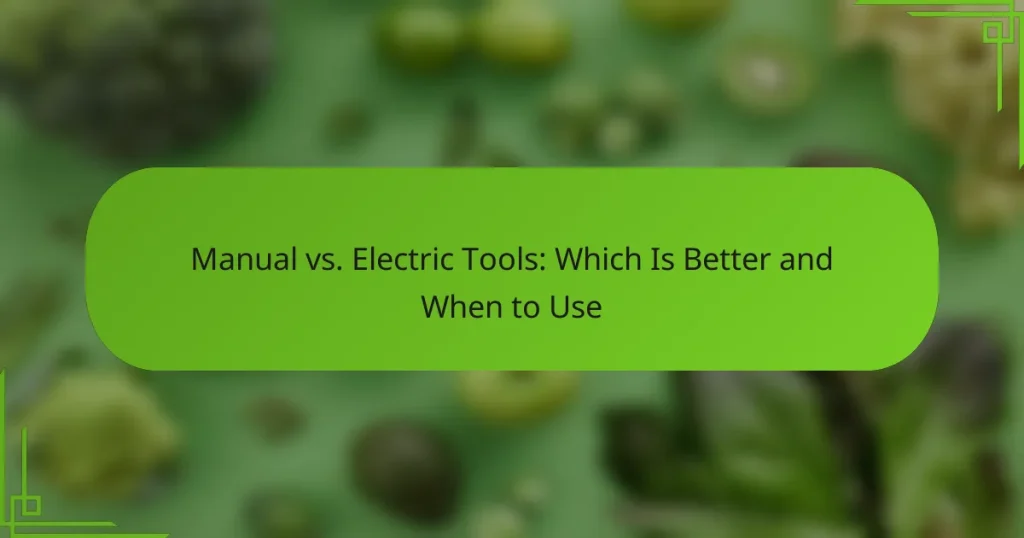To create an inviting and efficient bar environment, having the right equipment is crucial. Essential bar tools and equipment not only enhance the functionality of your space but also elevate the customer experience. From mixing tools to glassware, each item plays a vital role in delivering quality service and delicious drinks.
Manual vs. Electric Tools: Which Is Better and When to Use
Refrigeration: Quality Standards for Bars
Shakers: Best Options for Home Use
Bar Tools: Essential Items for Home Bartenders
Bar Equipment: Impact on Service Speed and Efficiency
Bar Equipment: Maintenance Tips for Longevity
What essential bar equipment do I need for a successful bar in Los Angeles?
To run a successful bar in Los Angeles, you need a combination of essential equipment that caters to both functionality and customer experience. Key items include a comprehensive bar tools set, various types of glassware, mixing equipment, ice storage solutions, and bar mats with pour spouts.
Bar tools set
A well-equipped bar tools set is fundamental for any bartender. Essential items include a shaker, jigger, strainer, muddler, and bar spoon. These tools facilitate the preparation of cocktails and ensure consistency in drink quality.
When selecting a bar tools set, consider durability and ease of use. Stainless steel tools are often preferred for their longevity and resistance to rust. Look for sets that offer a variety of tools to cover different drink recipes.
Glassware types
Choosing the right glassware is crucial for enhancing the presentation and enjoyment of drinks. Common types include highball glasses, rocks glasses, martini glasses, and wine glasses. Each type is designed to complement specific beverages.
In Los Angeles, consider the local cocktail culture when selecting glassware. Unique or artisanal glassware can create a distinctive atmosphere and appeal to customers looking for a memorable experience.
Mixing equipment
Mixing equipment is essential for crafting cocktails efficiently. This includes blenders, mixers, and stirring rods. A high-quality blender is particularly important for frozen drinks, while a good mixer can help create well-blended cocktails.
Investing in reliable mixing equipment can save time during busy hours. Ensure that your equipment is easy to clean and maintain, as hygiene is vital in the bar industry.
Ice storage solutions
Effective ice storage solutions are necessary for keeping drinks cold and refreshing. Options include ice bins, ice makers, and ice scoops. A dedicated ice bin helps manage ice supply and maintain cleanliness.
In warmer climates like Los Angeles, having a reliable ice supply is critical. Consider investing in an ice maker that can produce sufficient ice for peak hours, ensuring you never run out during busy service times.
Bar mats and pour spouts
Bar mats and pour spouts enhance efficiency and cleanliness at the bar. Bar mats help catch spills and prevent slips, while pour spouts allow for precise pouring of spirits. This combination improves the overall workflow for bartenders.
When selecting bar mats, choose those that are easy to clean and durable. Pour spouts should fit snugly on bottles to minimize waste and ensure accurate measurements, which is essential for maintaining drink consistency.
How do I choose the right bar tools for my establishment?
Choosing the right bar tools for your establishment involves assessing your specific needs based on size, drink offerings, and expected customer volume. Prioritize tools that enhance efficiency and align with your menu to ensure a smooth operation.
Assessing bar size
The size of your bar significantly influences the type and quantity of tools you need. A small bar may require only essential tools, while a larger establishment might benefit from specialized equipment to handle high demand.
Consider the layout and available space when selecting tools. For instance, compact tools like multi-use shakers can save space while still providing functionality.
Understanding drink menu
Your drink menu dictates the specific tools you will need. If you specialize in craft cocktails, invest in high-quality shakers, strainers, and jiggers. Conversely, a bar focused on beer and wine may require fewer specialized tools.
Review your menu regularly to adapt your tools accordingly. Seasonal changes in drink offerings may necessitate additional equipment or replacements.
Evaluating customer volume
Understanding your expected customer volume is crucial for selecting the right bar tools. High-volume bars may need multiple sets of essential tools to keep up with demand, while lower-volume establishments can operate with fewer items.
Monitor peak hours and adjust your inventory of tools as needed. For example, during busy nights, having extra glassware and shakers can prevent delays in service.
What are the must-have tools for cocktail preparation?
The essential tools for cocktail preparation include shakers, strainers, muddlers, jiggers, bar spoons, and garnishing tools. These items are crucial for mixing, measuring, and presenting cocktails effectively.
Shakers and strainers
Shakers are vital for mixing cocktails thoroughly, and they come in various styles, such as Boston shakers and cobbler shakers. A good shaker allows for proper aeration and chilling of the drink.
Strainers are used to separate the liquid from ice and other solid ingredients after shaking. Common types include Hawthorne strainers and fine mesh strainers, which help achieve a smooth pour.
Muddler and jigger
A muddler is essential for crushing herbs and fruits to release their flavors, making it a key tool for cocktails like mojitos. Choose a muddler with a sturdy handle and a flat end for effective muddling.
Jiggers are used for precise measurement of spirits and mixers, ensuring balanced cocktails. They typically come in various sizes, with the standard jigger holding 1.5 ounces on one side and 1 ounce on the other.
Bar spoons and garnishing tools
Bar spoons are long-handled utensils designed for stirring cocktails and layering drinks. Their unique shape allows for easy mixing and pouring, making them a staple in any bar setup.
Garnishing tools, such as zesters, peelers, and cocktail picks, enhance the visual appeal and flavor of cocktails. Proper garnishing can elevate a drink, so investing in quality tools is worthwhile.
What are the different types of glassware for serving drinks?
Different types of glassware are essential for serving drinks, as they enhance the drinking experience and presentation. Each type of glass is designed to complement specific beverages, influencing taste and aroma.
Highball and lowball glasses
Highball and lowball glasses are staples in any bar. Highball glasses are typically tall and narrow, ideal for mixed drinks like gin and tonic, while lowball glasses, also known as rocks glasses, are shorter and wider, perfect for serving spirits neat or on the rocks.
When choosing between the two, consider the drink being served. Highball glasses usually hold around 240-350 ml, while lowball glasses generally accommodate 180-240 ml. This distinction can affect the drink’s dilution and flavor profile.
Wine and champagne flutes
Wine and champagne flutes are specifically designed to enhance the enjoyment of their respective beverages. Wine glasses come in various shapes, such as red and white wine glasses, which allow for better aeration and aroma release.
Champagne flutes, on the other hand, are tall and narrow to preserve carbonation and showcase the bubbles. A standard wine glass typically holds about 150-300 ml, while a champagne flute usually accommodates around 150-200 ml. Selecting the right glass can elevate the tasting experience significantly.
Specialty cocktail glasses
Specialty cocktail glasses include a variety of unique shapes designed for specific drinks, such as martini glasses, coupe glasses, and tiki mugs. Each type serves to enhance the visual appeal and drinking experience of the cocktail it holds.
For example, martini glasses have a wide bowl and a long stem, allowing for easy stirring and chilling, while coupe glasses are shallow and wide, perfect for serving drinks that are shaken or stirred. When choosing specialty glasses, consider the cocktail’s ingredients and presentation to ensure an enjoyable experience.
What are the best ice storage solutions for bars?
The best ice storage solutions for bars include effective ice bins and dispensers, as well as reliable ice makers that produce the right type of ice. These systems ensure that bars can maintain a steady supply of ice, which is essential for serving drinks efficiently and keeping them cold.
Ice bins and dispensers
Ice bins are essential for storing ice in a bar setting, as they keep ice clean and easily accessible. Look for bins with insulated walls to prevent melting and maintain temperature, typically holding anywhere from 20 to 100 pounds of ice.
Dispensers allow for quick access to ice, which is crucial during busy hours. Choose models that can dispense ice with minimal effort, and consider those with built-in scales to monitor ice levels effectively.
Ice makers and types of ice
Ice makers are vital for producing ice on demand, and there are several types to consider. Common options include cube ice makers, which produce standard-sized cubes, and flake ice makers, which create smaller, softer ice ideal for cocktails and blended drinks.
When selecting an ice maker, assess the volume of ice your bar needs during peak hours. Most commercial ice makers can produce anywhere from 100 to 1,000 pounds of ice per day, so choose one that fits your bar’s demand. Regular maintenance is also crucial to ensure optimal performance and hygiene.
How can I maintain my bar equipment effectively?
Maintaining bar equipment effectively involves regular cleaning and proper storage techniques to ensure longevity and optimal performance. Consistent upkeep not only enhances the appearance of your tools but also ensures a safe and hygienic environment for serving customers.
Regular cleaning schedules
Establishing a regular cleaning schedule is crucial for maintaining bar equipment. Daily tasks should include wiping down surfaces, cleaning glassware, and sanitizing tools used for food and drink preparation. Weekly and monthly deep cleaning routines can involve descaling machines and checking for any wear and tear.
Consider using a checklist to track cleaning tasks. For example, daily tasks might include:
Wiping down countertops and bar tops
Cleaning shakers and strainers
Sanitizing cutting boards and knives
Proper storage techniques
Proper storage techniques are essential for protecting bar equipment from damage and contamination. Store glassware upright to prevent chipping and keep tools in designated areas to avoid clutter. Use racks or cabinets that allow for airflow to prevent moisture buildup.
Additionally, consider labeling storage areas for easy access. For example, keep all cocktail shakers in one section and glassware in another. This organization can streamline operations and reduce the time spent searching for equipment during busy hours.






